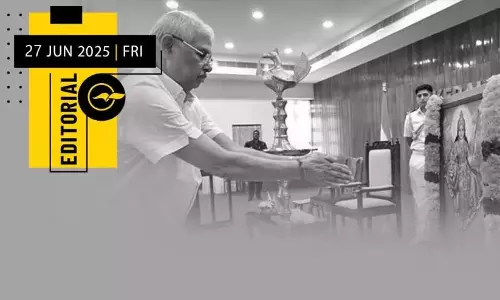
IISc Bengaluru researchers develop low-cost sensor for liver cancer detection
text_fieldsNew Delhi: Researchers at the Indian Institute of Science (IISc) have developed a low-cost, portable sensor that could significantly speed up the detection of liver cancer and other diseases. The innovation hinges on the use of terbium, a rare earth metal, to create a luminescent probe that detects beta-glucuronidase, an enzyme linked to liver cancer and several other conditions.
Beta-glucuronidase, which normally helps break down glucuronic acid, also serves as a key biomarker for cancers such as colon, breast, and kidney, as well as for urinary tract infections and AIDS. Elevated levels of this enzyme are also associated with neonatal jaundice and NSAID-induced toxicity.
Traditional detection methods like colourimetry and fluorescence often suffer from poor sensitivity and interference from background signals. The IISc team overcame this by leveraging the long-lived excited states of rare earth metals, which help filter out background noise and produce a clearer signal. “This results in a much sharper fluorescence response,” explained Ananya Biswas, co-first author of the study published in Chemistry.
The breakthrough began with the discovery that terbium ions, when embedded in a gel matrix made from bile salts, emit a bright green glow. The team then introduced a molecule called 2,3-DHN, masked with glucuronic acid. When beta-glucuronidase is present, it cleaves the mask, releasing 2,3-DHN. This molecule acts as an “antenna”, absorbing UV light and transferring energy to nearby terbium ions, which intensifies the green fluorescence.
To make the technology more accessible, the researchers embedded the gel into paper discs, creating a simple, portable sensor. When exposed to samples containing beta-glucuronidase, the discs glow green under UV light. The results can be analysed using a basic UV lamp and ImageJ, a free, open-source software—making the method ideal for low-resource settings.
The sensor demonstrated a detection limit well below the enzyme levels typically seen in cirrhosis, an advanced stage of liver disease. While further clinical validation is needed, the researchers believe this approach could dramatically reduce the cost of detecting critical biomarkers and improve early diagnosis across a range of conditions.
(inputs from IANS)























